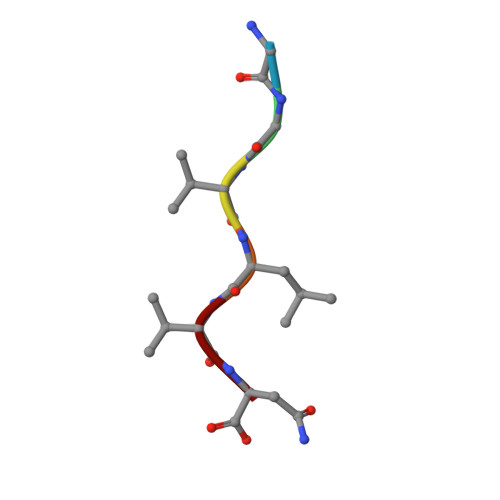Structure-based design of non-natural amino-acid inhibitors of amyloid fibril formation.
Sievers, S.A., Karanicolas, J., Chang, H.W., Zhao, A., Jiang, L., Zirafi, O., Stevens, J.T., Munch, J., Baker, D., Eisenberg, D.(2011) Nature 475: 96-100
- PubMed: 21677644
- DOI: https://doi.org/10.1038/nature10154
- Primary Citation of Related Structures:
3PPD - PubMed Abstract:
Many globular and natively disordered proteins can convert into amyloid fibrils. These fibrils are associated with numerous pathologies as well as with normal cellular functions, and frequently form during protein denaturation. Inhibitors of pathological amyloid fibril formation could be useful in the development of therapeutics, provided that the inhibitors were specific enough to avoid interfering with normal processes. Here we show that computer-aided, structure-based design can yield highly specific peptide inhibitors of amyloid formation. Using known atomic structures of segments of amyloid fibrils as templates, we have designed and characterized an all-D-amino-acid inhibitor of the fibril formation of the tau protein associated with Alzheimer's disease, and a non-natural L-amino-acid inhibitor of an amyloid fibril that enhances sexual transmission of human immunodeficiency virus. Our results indicate that peptides from structure-based designs can disrupt the fibril formation of full-length proteins, including those, such as tau protein, that lack fully ordered native structures. Because the inhibiting peptides have been designed on structures of dual-β-sheet 'steric zippers', the successful inhibition of amyloid fibril formation strengthens the hypothesis that amyloid spines contain steric zippers.
Organizational Affiliation:
Department of Biological Chemistry, Howard Hughes Medical Institute, UCLA, Box 951970, Los Angeles, California 90095-1570, USA.
















